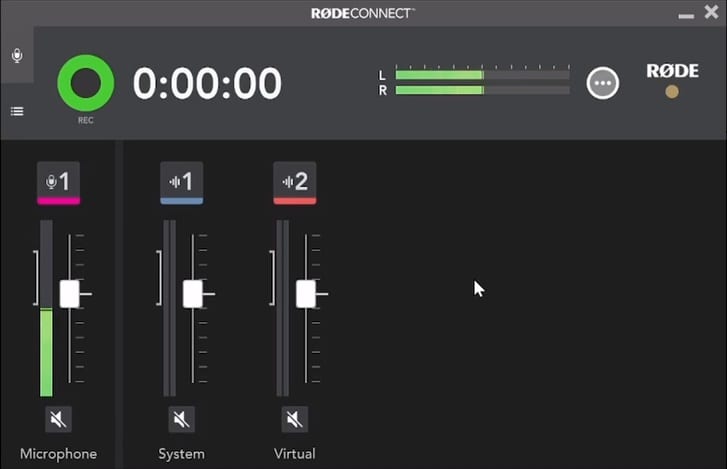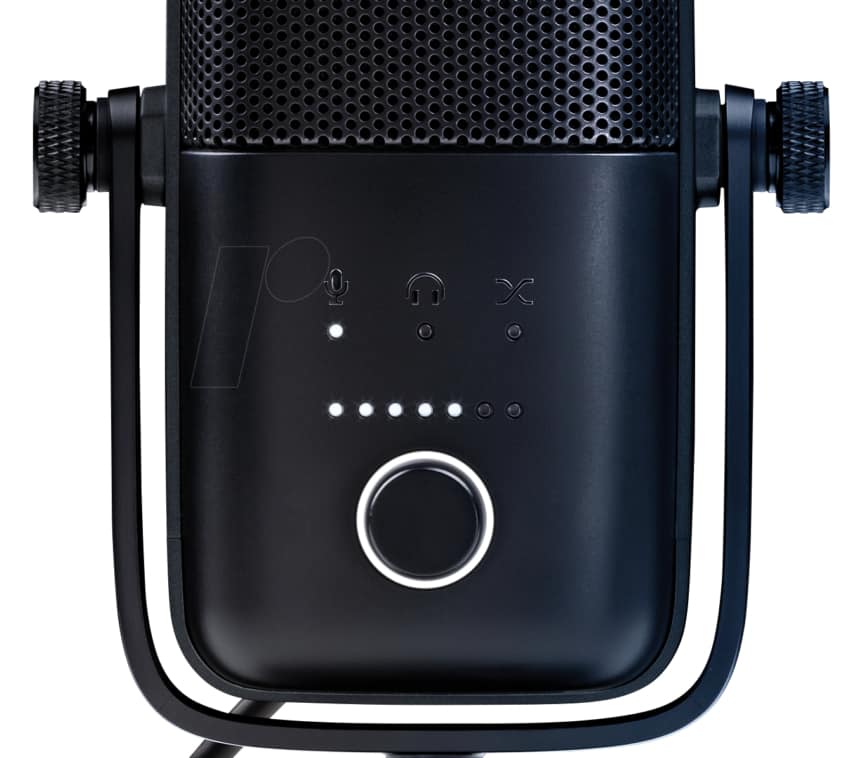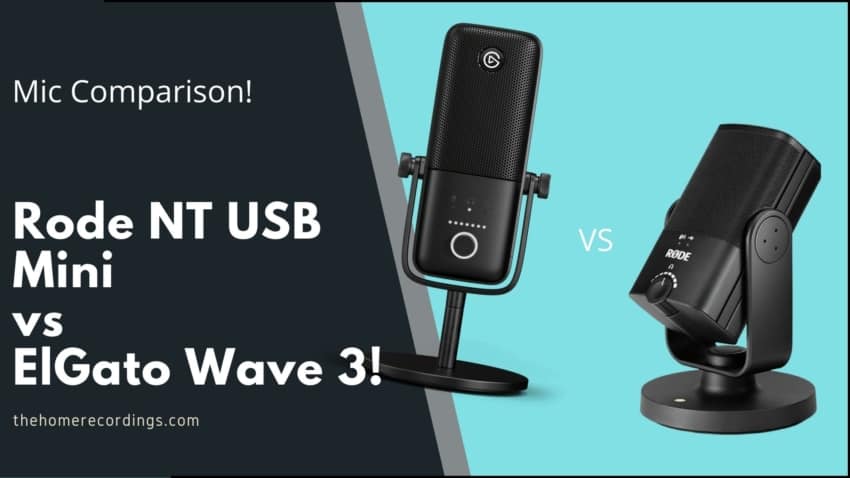Last updated on December 29th, 2023 at 09:53 pm
I recently gave the ElGato Wave 3 the “Best gaming microphone” title, but now that the Rode NT USB Mini has been released, I’m not so sure if the ElGato still deserves that title.
In this article, I will be comparing both microphones, going over how they sound, their build quality, what they are good for, their included software, and more.
So, without any further ado, let’s get started!
In short, here are the differences between the Rode NT USB Mini and the ElGato Wave 3: Both are condenser microphones that sound very similar and that also feature software designed to further process the sound (useful for streamers). However, the Rode NT USB Mini has a better build quality and also sells for 30% less than the ElGato Wave 3.
So, let’s get this show on the road, shall we?
Rode NT-USB Mini Overview

The Rode NT USB Mini is the little brother of the Rode NT USB, and it comes with the same feature set but at a much lower price tag. However, I don’t think that it sounds as full, but more on this in a second.
As far as the build quality goes, everything but the grille is excellent since the grille does flex a little more than the one on the Rode NT USB (the big one), but it’s definitely not enough for me to worry about it getting damaged.
It features one knob on the front that lets you control the headphone volume and also allows you to enable zero-latency monitoring when tapping on it. A light on top of the knob will turn on indicating that zero-latency monitoring is enabled (the second light only tells you if the mic is connected and getting power).
It comes with a 360-degree swing mount that is great for setting up the mic on a boom arm since you can turn it however you want until you get it just right.
Contrary to its bigger brother, the NT USB Mini doesn’t come with an included pop filter, but rather has one already built-in, although I have to say that plosives are still kind of an issue and I would recommend using an external pop filter just in case.
Now, you may have noticed that it only has one knob, which is the one that controls the headphone volume, but where are the gain and Mix knobs? Well, there are none, which is a shame, and you need to control both of these functions from your PC.
I through Rode would’ve learned after not including a gain dial on the NT USB, but they actually went further and removed one more knob.
It’s worth mentioning, however, that even though it would be nice to have dedicated knobs to control the gain and the mix between the computer’s playback and the direct signal, all of this can easily be adjusted through their Rode Connect software.

The Rode Connect software lets you use up to 4 Rode NT USB Minis one a single computer, access some processing which are built into the mic, such as a gate, compression, and more, and it also lets you control the playback volume of different apps and games, which lets you create a nice mix for your stream (great software for gamers).
Lastly, it doesn’t come with a shock mount, and when using it with the included desk stand, it will absolutely pick up all the keyboard strokes, tapping on the desk, or any other types of vibrations that may be present. So, for all you gamers out there, get a boom arm!
What comes in the Box?
- Rode NT USB Mini Microphone
- Desktop Stand
- Microphone Stand adapter
- UNB Cable
Features
- Comes with the Rode Connect Software (Great for streamers & gamers)
- Built-in pop filter.
How does it sound?
The Rode NT USB Mini offers a very balanced sound, especially when recording voice-related stuff and singing: The low end isn’t too prominent or boomy while still being extremely present, the mids are actually quite prominent but I like how this affects the vocals, and the high end is very open and airy without sounding shrill.
So, at least as far as vocals go, it’s a very balanced sound, and I thought the same when recording my acoustic guitar since there was nothing really standing out to me as overly harsh.
The one con I can think of is that, since the mid frequencies are a bit more prominent than in other mics, people who have a very nasally voice might find that that nasally sound will be slightly exaggerated.
Lastly, when recording my electric guitar, it sounded great when recording a clean signal, but I didn’t really like recording distorted guitars with it since it made them sound quite shrill.
And lastly, the headphone amp that the Mini comes with is great: It has enough power to drive the Sennheiser HD 650!
Specifications
- Polar Pattern; Cardioid
- Frequency Response: 20Hz- 20kHz
- Sample Rate: 48kHz/24-bit
- Max SPL: 121dB
- Weight: 585g
Get the Rode NT USB MINI here.
- Rode NT USB MINI: Amazon, Sweetwater.
Elgato Wave 3

Now, I have to say that I didn’t have high expectations for this mic at all, but I definitely was impressed since for once a company decided to focus on what the users actually need, instead of just adding unnecessary features to inflate the price.
So, if you’re a gamer, YouTuber, Streamer, etc., this microphone probably has everything you need.
As far as the build quality goes, it’s nothing to brag about since the body is made out of plastic which does feel a little cheap, and the U-bracket that attaches the mic to the desk stand is also made of plastic. The mesh grille is metal, but it has a bit of give to it, which isn’t ideal as well.
Even though it should last you a very long time if taken good care of, the overall build quality is lacking, and I wouldn’t recommend dropping this mic or anything similar.
However, even despite this, I still think that it’s probably the best microphone for Gamers/YouTubers out there, and here are the reasons for that:
- It features a “Clipguard”, which when enabled will prevent clipping or saturation if your signal gets too loud; like for example if you scream.
- It also comes with a high-pass filter that can be enabled to remove a bit of the low end, and this can come in handy when you want to better deal with the proximity effect (basically, the closer you get to the mic, the more low-end you will hear, and the high-pass filter helps deal with this).
These features can be accessed through the Wave Link software that comes with the mic and are definitely something that the gaming and streaming community desperately need to be able to produce content with good sound quality, and it’s refreshing to see that a company has finally taken notice.

Lastly, it features a Mute button, gain control, headphone volume, and the mix control between the computer’s playback and zero-latency monitoring.
Note: If you want to check out my full written review of the ElGato Wave 3, you can find it here.
What comes in the Box?
- Elgato Wave 3 Microphone
- USB Cable
- Mic Stand adapter
Features
- ClipGuard
- High Pass Filter
- Mute Button
- Wave Link Software for more in-depth control of the audio
How does it perform?
As far as spoken word goes, which is what this mic was mainly designed for, it’s absolutely great since there are no prominent frequencies poking their head out anywhere, plus if you want to get rid of some of the low end, you can always engage the high pass filter.
The Clip Guard is definitely a huge plus here since there will be no more clipping/distorting, which is definitely something that streamers have to deal with on a daily basis.
There is one issue though, and it’s that the desk stand doesn’t really help reject any noise coming from the desk itself, like for example if you tap your fingers on it, the vibration coming from the keyboard, or basically bumping against the desk.
In that case, I would much rather recommend a boom arm with a shock mount to absorb those vibrations.
Now, what if you want to record music with it?
Well, for singing it does more than fine!
As far as recording instruments go, it did a decent job at recording acoustic guitar, and the HPF came in handy here since it allowed me to angle it more towards the sound hole and still get a good recording.
Also, I have to say that I was pleasantly surprised at how well it managed to capture the sound of my electric guitar cabinet, even with distortion.
Still, I think that I would much rather use a good dynamic mic for this, but hey… it works!
Finally, the Wave Link software that comes with this microphone is where you can enable the Clip Guard and the High Pass filter, plus it lets you mix the audio signals from different sources in the PC, like Google Chrome, etc., and decide how high or low the volume of every source will be on the stream.
Specifications
- Polar Pattern; Cardioid
- Frequency Response: 20Hz- 20kHz
- Sample Rate: 48kHz/96kHz – 24-bit
- Max SPL: 120dB
- Sensitivity: -25dBFS
- Weight: 280g
Get the Elgato Wave 3 here.
- Elgato Wave 3: Amazon.
Which one should you go for?
Both microphones are quite similar, especially because they each come with some sort of software to further process the signal, to engage a limiter (clip guard), etc.
Since the Rode NT USB Mini does cost like 30% less, I think that it’s the better choice for most people, especially since it’s completely made out of metal, compared to the ElGato which is made of plastic, but the ElGato Wave 3 is still a fantastic microphone that excels at what it’s supposed to do, plus the included software allows you to mix the different signals of the various apps you’re using to stream.
Still, I believe that the Rode wins overall because of the lower price tag.
Other alternatives
I reviewed a couple of USB mics already and there are two that stand out: The Audio-Technica AT2020+ USB and the Samson G-Track Pro.
The AT2020+ USB sounds great, similar to the Elgato Wave 3 in my opinion, but it’s completely made out of metal, so there’s that, but it doesn’t come with the included software, so I don’t think it’s as good for streamers.
The Samson G-Track Pro is an interesting alternative, mainly for guitarists and bassists since it features an instrument jack that lets you record both the microphone signal and the instrument signal to separate tracks, and you can even use it with amp simulation software with very low latency.
FAQs
Is Rode NT USB mini good for gaming? The Rode NT USB Mini is a great microphone for gaming since it comes with the Rode Connect software that lets you engage additional processing, such as a gate to prevent noise, a compressor/limiter to prevent loud volume spikes, and more, which is ideal for people who stream gameplay.
Is Rode NT USB mini good for voice over? The Rode NT USB Mini excels at recording the human voice, both spoken word as well as singing, which means that it’s a great choice for doing voice overs. Keep in mind that it has a slightly pronounced mid range which could make some voices sound nasally.
